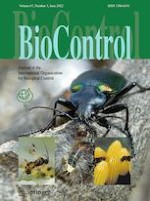12.02.2022
Chemotactic response and motility of the mollusc parasitic nematode Phasmarhabditis papillosa towards mucus from different mollusc species
Erschienen in: BioControl | Ausgabe 3/2022
EinloggenAktivieren Sie unsere intelligente Suche, um passende Fachinhalte oder Patente zu finden.
Wählen Sie Textabschnitte aus um mit Künstlicher Intelligenz passenden Patente zu finden. powered by
Markieren Sie Textabschnitte, um KI-gestützt weitere passende Inhalte zu finden. powered by
